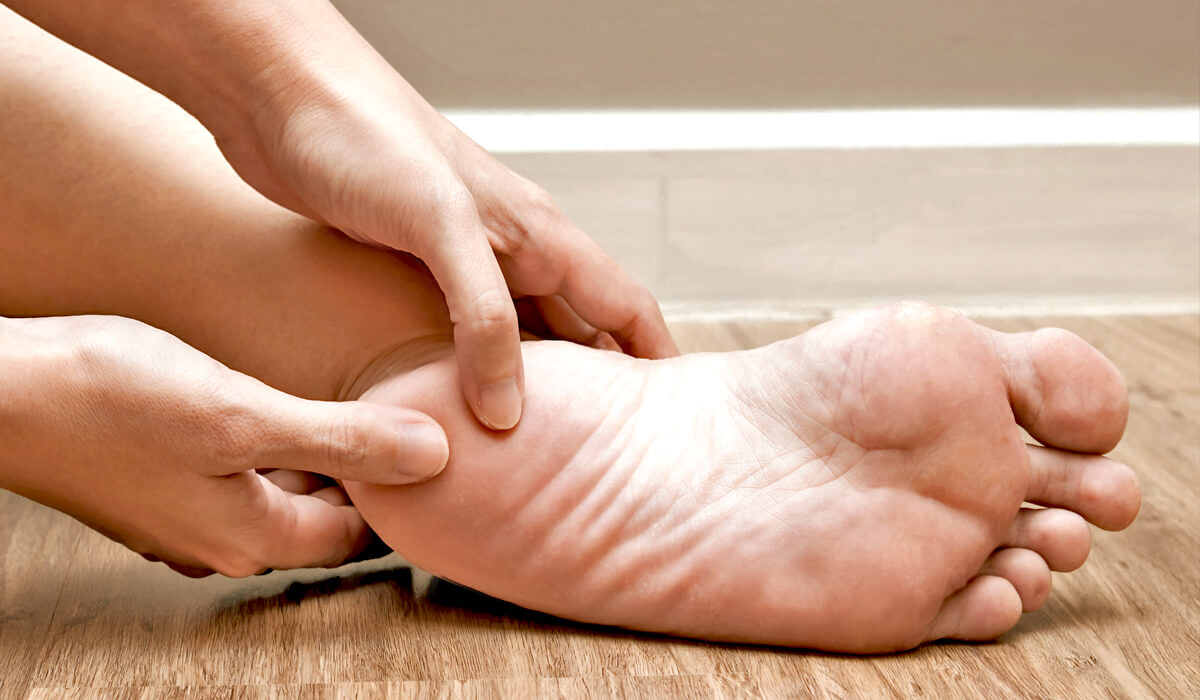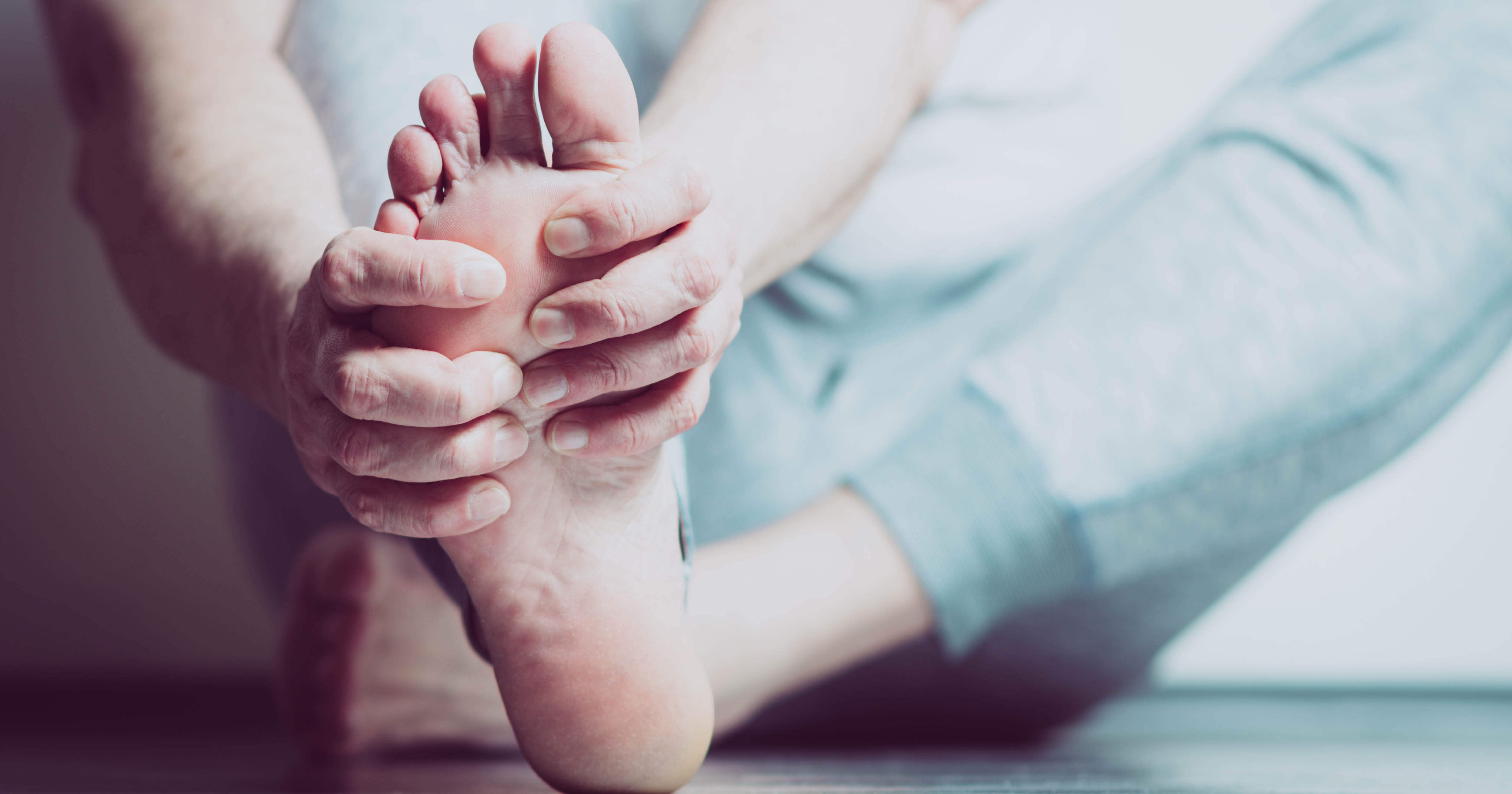If you have type 1 and type 2 diabetes, you already know the importance of good diabetes management for preventing potential serious problems, such as nerve damage, poor blood circulation, and diabetic foot ulcers.
To help you keep your feet feeling good, this blog post shares tips on preventing non-healing sores and infections and covers why it’s essential to see an experienced podiatrist for your wound care.

What causes diabetic foot ulcers?
A diabetic foot ulcer is an open sore on a person’s foot with diabetes. They typically appear under a big toe or the bottom of the foot. According to the American Podiatric Medical Association, a diabetic foot ulcer is one of the most severe complications for people with diabetes, occurring in approximately 15% of patients.
Long-term high blood sugar can cause neuropathy, a type of diabetes-related nerve damage. Neuropathy can occur anywhere in the body, but it occurs most often in the legs and feet. The condition makes it difficult for people with diabetes to feel sensations (like pain). They can even lose feeling in their feet, making it challenging to notice wounds like blisters, sores, or cuts.
Who is most at risk?
Anyone with type 1 or type 2 diabetes is at risk for foot problems, but they’re more prevalent in people who also have:
- Nerve damage or poor blood flow in the feet
- Trouble managing their blood glucose levels
- Frequent episodes of hyperglycemia (high blood sugar)
- Extra weight or obesity
- High blood pressure
- High cholesterol
Signs of a diabetic foot ulcer
The first sign people with diabetes-related foot ulcers often notice is drainage in their socks. (Pain is not a common symptom and often goes unnoticed since most patients have a loss of feeling in their feet.)
Symptoms of diabetic ulcers on your feet can include:
- Changes to the skin or toenails, including cuts, blisters, calluses, or sores
- Drainage on your sock or in your shoes
- Foul smell
- Redness
- Skin discoloration
- Swelling
- Blisters, corns, and calluses
- Persistent pain when walking
Learn more about the warning signs of an infected wound
How to prevent diabetic foot ulcers
If you have diabetes, the best way to protect yourself against foot ulcers and dangerous infections is to be proactive with preventative foot care.
Here are some tips for caring for your feet:
- Wash your feet each day with soap and warm (not hot) water
- Dry your feet thoroughly after bathing or swimming
- Use a moisturizing lotion on your feet (but avoid rubbing it between your toes)
- Inspect your feet each day for any cuts, sores, blisters, or calluses (or have someone do it for you)
- Always wear clean, dry socks that fit you well
- Where proper-fitting, supportive shoes
- Never walk barefoot, whether indoors or outdoors
- Check your shoes for any pebbles or debris before putting them on
- See your diabetes doctor and podiatrist regularly and report any changes in your feet right away
Download the Complete Guide to Wound Care
Treatments for diabetes-related foot ulcers
Poor circulation from diabetes can make it difficult for foot ulcers to heal. A foot ulcer or wound can become infected if not treated right away.
A podiatrist should treat diabetic foot ulcers and other foot problems. They can examine your foot and administer medical treatments, if necessary, such as:
- Draining fluid or pus from the ulcer
- Removing or cutting away dead or infected tissue
- Applying bandages and ointments to absorb extra fluid and protect the wound
- Prescribing a wheelchair or crutches to take the weight off your foot (called “offloading”)
- Prescribing antibiotics to treat an infection
Most diabetes-related foot problems can be treated without surgery, especially if they’re not infected. But if non-surgical methods don’t work, hospitalization or surgery may be recommended. In some serious cases, a surgeon may need to amputate a toe, foot, or even part of the leg to prevent the spread of infection.
Be proactive with your health
In addition to following the advice of your podiatrist, you can optimize your body’s ability to heal wounds like diabetic foot ulcers by making some lifestyle adjustments, such as:
- Get proper wound care services when needed to prevent further harm or infection
- Stop smoking
- Exercise regularly
- Follow proper wound care nutrition and eat healthy foods with more fiber and less fat and salt
- Add items to your diet that have wound-healing nutrients, like vitamin A, vitamin C, copper, and zinc
- Maintain a healthy weight
- Avoid NSAIDs, like aspirin and ibuprofen that can delay healing
- Find ways to manage your stress
Explore our medically-supervised weight loss services
Dr. Marsh can help with your diabetic foot issues
Whether you have diabetic foot problems currently or want to reduce your risk of developing diabetic foot ulcers, the most important step you can take is to find an experienced podiatrist.
Our full-service podiatrist, Dr. Scott Marsh, DPM, FACFAS, can help manage your condition through medical treatments, physical therapy, custom orthotic inserts, and—if necessary—surgical intervention.



